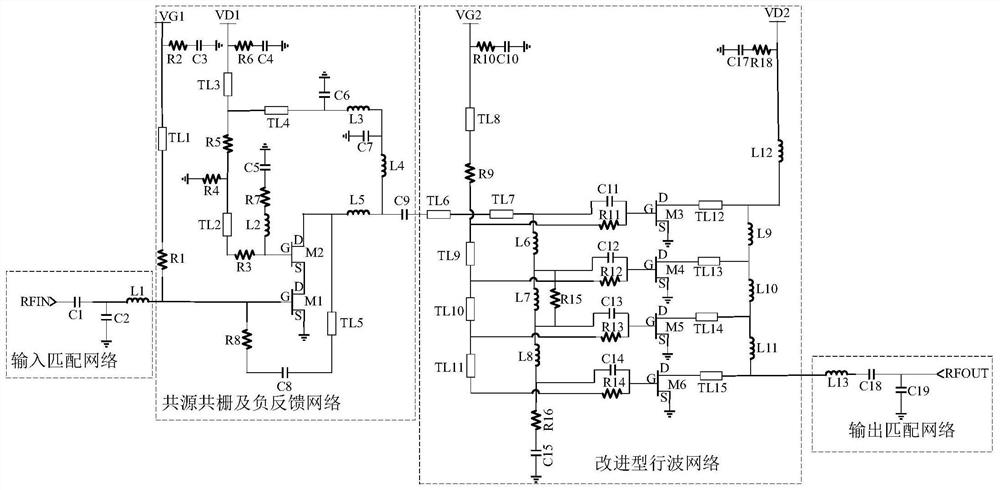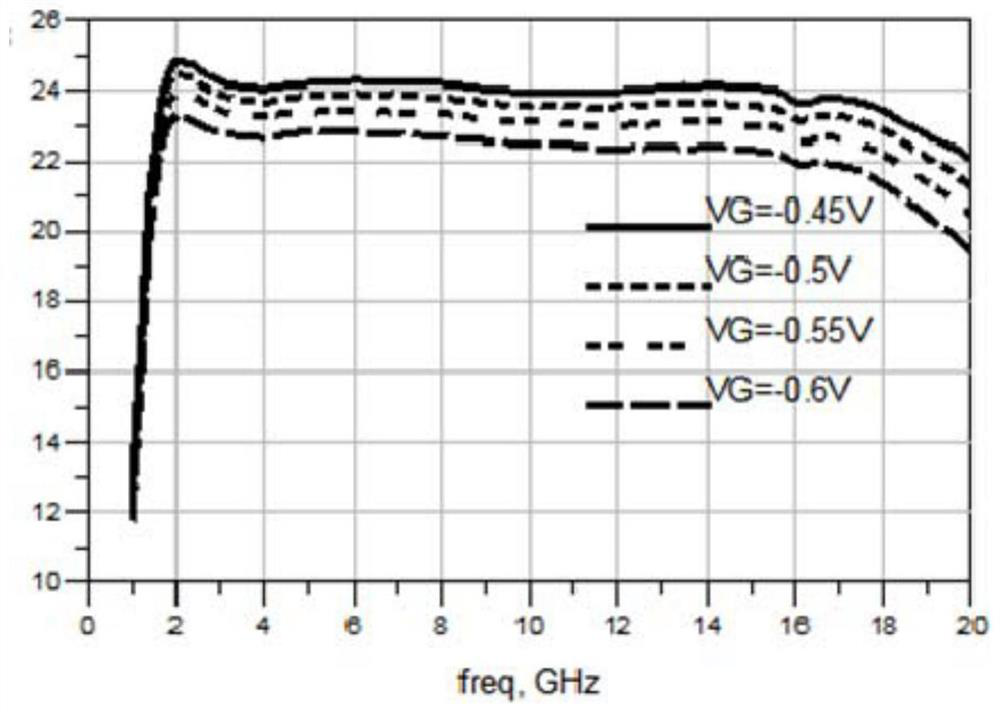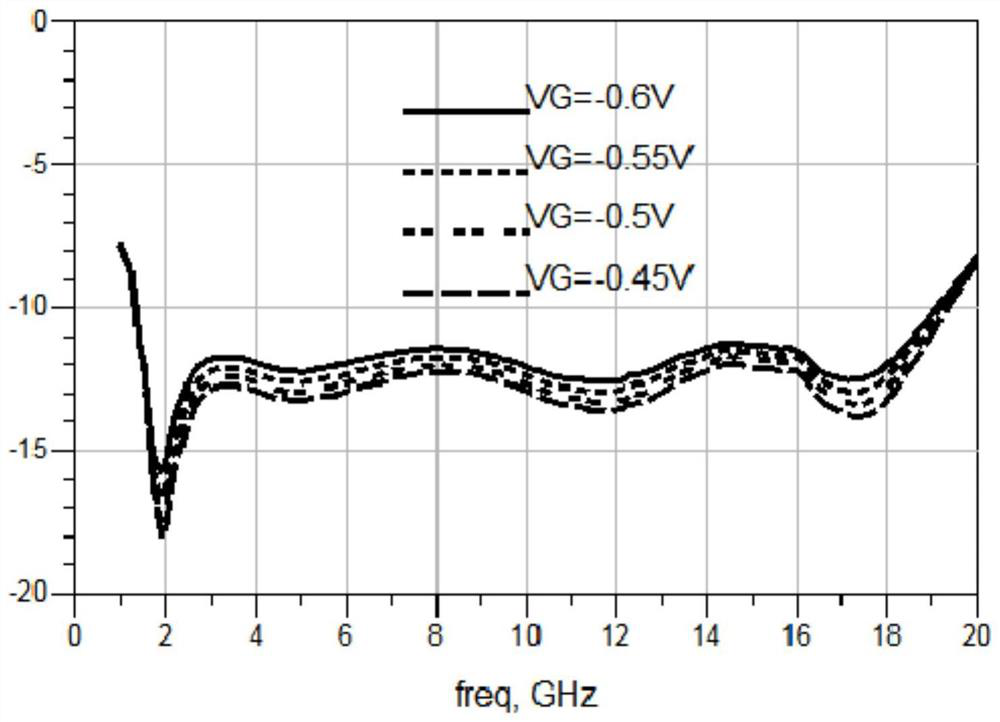Ultra-wideband low-noise amplification circuit
A low-noise amplification and ultra-broadband technology, which is applied in low-noise amplifiers, amplifiers, radio frequency amplifiers, etc., can solve the problems of low-noise implementation of amplifiers, unsatisfactory gain fluctuations, and insufficient gain, and achieve suppression of circuit instability. The effect of flat gain and high gain
- Summary
- Abstract
- Description
- Claims
- Application Information
AI Technical Summary
Problems solved by technology
Method used
Image
Examples
Embodiment 1
[0036] like figure 1 As shown, an ultra-wideband low noise amplification circuit includes an input matching network, a common source, a negative feedback network, an improved line wave network, and an output matching network;
[0037] Improved traveling wave networks include four transistors, and the gate of each transistor is connected to a microstrip line through a resistor, and the output end of each transistor is connected to an inductance connection;
[0038] Enter the input of the matching network as the input of the ultra-wideband low noise amplification circuit, outputs the output of the matching network as the output of the ultra-wideband low noise amplifier circuit.
[0039] In the present embodiment, the four-channel transistor is the same, and each transistor gate radio frequency input and DC feed are completely separated. The radio frequency passage before the transistor gate is added to a capacitor, and the DC passage is connected by a circuit. The line returns the gat...
Embodiment 2
[0053] like Figure 2 ~ 6 As shown, in this embodiment, the above-described amplifying circuit is provided in the frequency band of 2 to 18 GHz, and an echo loss, noise, and output power test curve example;
[0054] Among them, Vd1 = Vd2 = 4V, gate pressure Vg variable, VG1 = Vg2 = -0.45V ~ -0.6V, step = 0.05V, and all-bands no misseb, from the figure, it can be seen that the amplifier is working in Ultra-wide band 2 ~ 18GHz, full range input echo loss is less than -13, output returning loss is less than -15; its gain has typical value 24dB when VG = -0.45, and has gain variable characteristics; full frequency band gain fluctuations less than ± 1dB, and at 4 ~ 16GHz less than ± 0.2dB; the noise is typically 1.5dB; the output P1 is typically 17.5 dBm.
PUM
 Login to View More
Login to View More Abstract
Description
Claims
Application Information
 Login to View More
Login to View More - R&D
- Intellectual Property
- Life Sciences
- Materials
- Tech Scout
- Unparalleled Data Quality
- Higher Quality Content
- 60% Fewer Hallucinations
Browse by: Latest US Patents, China's latest patents, Technical Efficacy Thesaurus, Application Domain, Technology Topic, Popular Technical Reports.
© 2025 PatSnap. All rights reserved.Legal|Privacy policy|Modern Slavery Act Transparency Statement|Sitemap|About US| Contact US: help@patsnap.com



